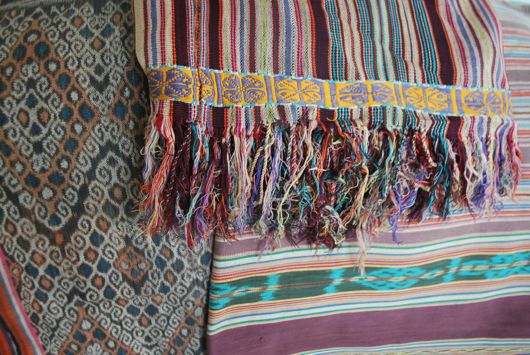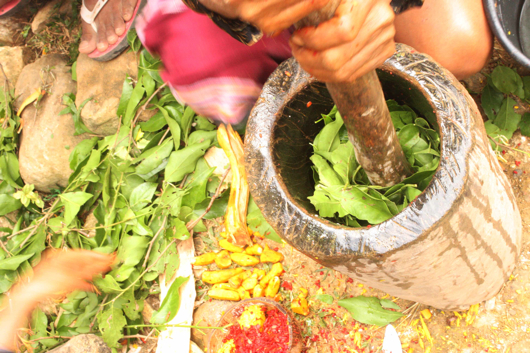Women in the World: East Timor
I’ve been recently pondering on the role that creativity plays in a country’s cultural identity. Think of the countries you’ve traveled to… Many of them I’m sure, can be associated with a particular type of artistry or craft. Just think of Turkey and their kilims, Japan and woodblock printing, South American ikat weaving…
In many of these examples, these handcrafts are not just an outlet for creative expression (although that is true and important), but are also a way of holding and sharing stories and history. Many countries have little in the way of recorded written history, but have a rich culture of oral histories. And handcrafts and art play a vital role in recording these and allowing them to be shared and passed from one generation to the next.
Take East Timor (Timor-Leste as it is now known and referred to there), one of Australia’s closest neighbours and incongruously, the poorest nation in Asia and the Pacific. Timor Leste is a tiny country with a population of just over 1 million people. It faced oppressive rule until recently, and now is struggling to pull its people out of poverty.
Despite its tiny size, Timor Leste has over 35 languages spoken and fairly rough terrain, making it difficult to have a united recorded history, and making the use of traditional crafts all the more important. One of the most prevalent and important is the weaving of beautiful fabrics called ‘tais’ (pronounced ‘tie-iss’).
Between 2005 and 2007 I lived and worked in its capital Dili, and not surprisingly, I spent many an hour wandering through the markets which sold these beautiful fabrics. I also spent time with women in remote villages who were weaving them and witnessed the important role the weaving played in village life, and how the knowledge contained in its practice was being passed down from the grandmothers to the grandchildren.
I recently asked some questions to Taryn Lane, an Australian woman living in the Southern tip of East Timor and working with the Cooperative for Tais Culture and Sustainable Development (CTKDS).
Taryn writes (after several days of no electricity thanks to major storms!), “Tais weaving is the material expression of a rich living intangible cultural heritage of Timor Leste. Tais is the socio-cultural fabric of life that keeps women connected to their history, stories and ways of being”.
“Many women see weaving as a process of wellbeing and healing after many years of occupation. It is an unbroken thread over eras of rapid change and development. Creativity releases the burden of daily work for the women and connects them to a living heritage of cultural expression”.
“Many Timorese women will learn how to weave from an early age and are immersed in it as it relates to ritual and the cycles of nature. The harvesting of the cotton, the spinning, dyeing and weaving all follow the seasonal patterns of their local area. Each area has its own recipes and processes for the colouring of the cotton and there is a rich intact cultural heritage within East Timor around this".
"Tais are usually necessary for wedding dowries alongside buffalo and to become a weaver is often a rite of passage for many women prior to marriage. Each language group holds their own motifs and stories around the textiles and are a unique expression of who they are”.
The challenge now, for many countries including Timor Leste, is to ensure that these traditions are not lost and that the knowledge and skills are passed on to younger generations. Organisations such as CTKDS are assisting to do this by supporting young women as the next generation of leaders and using community co-operative enterprise models for income generation.
If you are in Australia, you can find out more through ETWA (East Timor Women Australia) and buy or sell the beautiful products that Timorese women make. You can also volunteer, assist in fundraising, take a tour to Timor and if you are really interested, apply for a long term position in Timor Leste!
Further information can be found at www.ctkds.tumblr.com or www.etwa.org.au, or email ctkds.losplaos@gmail.com.au
Joanna Francis spends most of her time hanging out with her one year old son. But she also works for a children’s foundation and has recently started her own little business making baby quilts. Her house is a mess. In the past, Joanna has worked as an aid worker in several developing countries, and is passionate about the rights of women and children. You can visit her and her blog at www.miettehandmade.com



